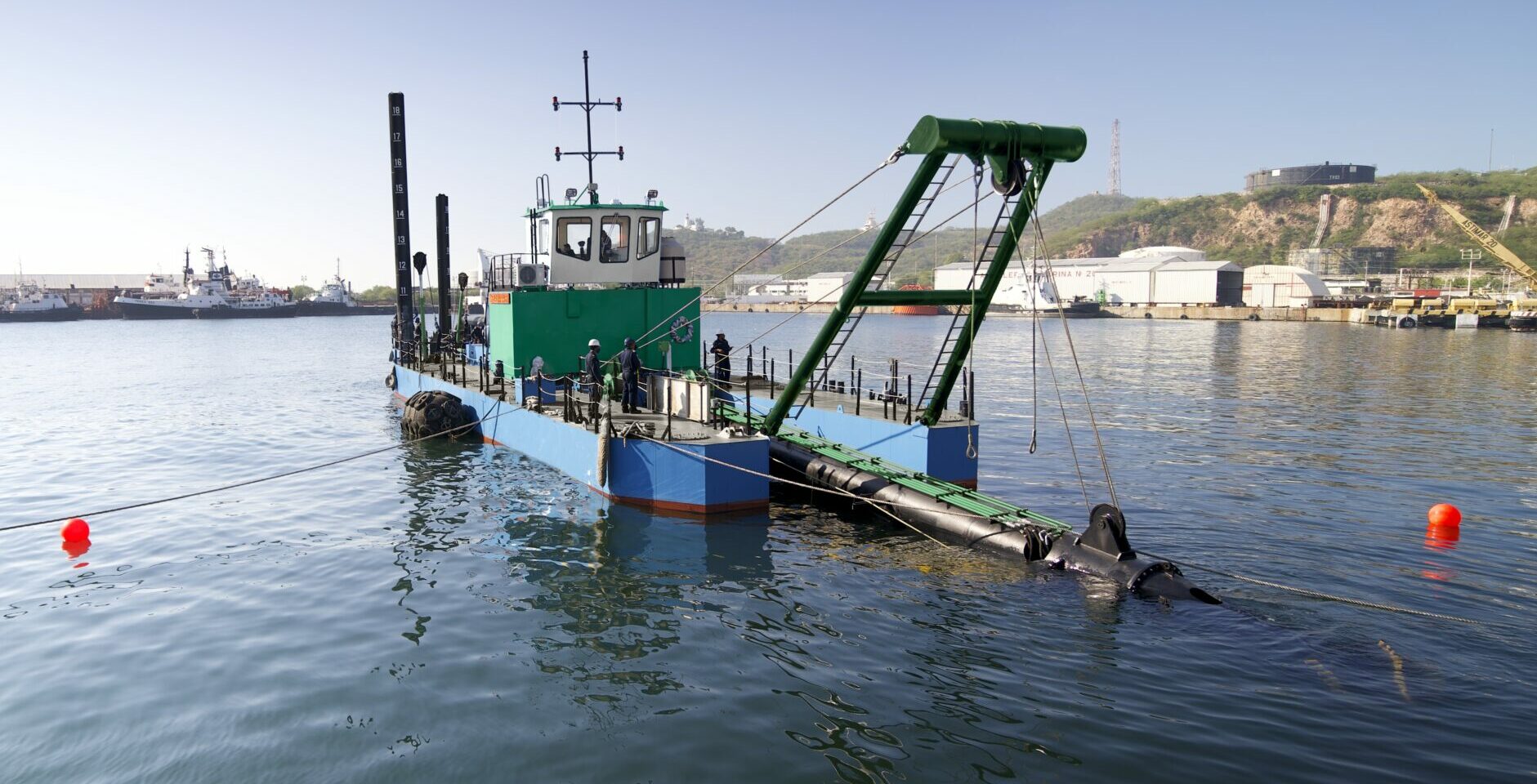Equipment Used in Dredging
Dredging is a complex process that involves various types of equipment and techniques to remove sediments and debris from water bodies, such as rivers, harbors, and coastal areas. Here’s an overview of the equipment used in dredging, how water is removed from beaches during the dredging process, and the difficulties involved:
- Cutter Suction Dredgers (CSDs)
- Function: These dredgers use a rotating cutter head to loosen the material from the bottom, which is then sucked up by a suction pipe.
- Application: Suitable for hard materials like clay and rock.
- Trailing Suction Hopper Dredgers (TSHDs)
- Function: These vessels trail a suction pipe along the seabed to suck up loose material, which is then stored in onboard hoppers.
- Application: Ideal for maintenance dredging and creating navigation channels.
- Bucket Dredgers
- Function: These use a series of buckets mounted on a rotating chain to scoop up material from the seabed.
- Application: Effective for hard and compacted materials.
- Backhoe Dredgers
- Function: Similar to an excavator, these use a large bucket to dig up material from the seabed.
- Application: Suitable for precise and controlled dredging operations.
- Hydraulic Dredgers
- Function: Utilize high-pressure water jets to dislodge sediment, which is then pumped out.
- Application: Common in softer sediments and sand.
- Auger Dredgers
- Function: Use an auger to break up material, which is then sucked up by a pump.
- Application: Ideal for environmental dredging to minimize sediment dispersion.
Water Removal from Beaches During Dredging
During dredging operations, water removal from beaches is typically managed using a combination of methods:
- Pumping Systems
- High-Capacity Pumps: Used to pump water from the dredged material and return it to the water body.
- Dewatering Bags: Geotextile bags filled with dredged material; water drains out while sediment is contained.
- Sedimentation Ponds
- Purpose: Temporary ponds where dredged slurry is deposited, allowing sediments to settle and clearer water to be released.
- Filtration Systems
- Application: Filters or clarifiers can be used to remove fine particles from the water before it is discharged back into the environment.
- Containment Areas
- Design: Constructed areas onshore where dredged material is deposited, and water is allowed to drain away through controlled outlets.
Challenges in Water Removal During Dredging
- Environmental Regulations
- Compliance with environmental regulations to ensure that the discharged water does not harm the surrounding ecosystem.
- Sediment Management
- Handling large volumes of sediment and ensuring it settles properly to avoid turbidity and water quality issues.
- Equipment Maintenance
- Regular maintenance of pumps and filtration systems to prevent breakdowns and ensure efficient operation.
- Weather Conditions
- Adverse weather can impact dredging operations and water removal efficiency, leading to delays.
- Logistical Complexity
- Coordinating between different pieces of equipment and managing the flow of dredged material can be challenging.
Difficulty of the Process
The difficulty of water removal during the dredging process depends on several factors:
- Sediment Type
- Softer sediments like silt and sand are easier to handle compared to hard clay or rock.
- Volume of Material
- Larger dredging projects with high volumes of material require more sophisticated equipment and systems.
- Environmental Sensitivity
- Dredging in environmentally sensitive areas demands additional precautions and measures to minimize impact.
- Technological Requirements
- Advanced technology and equipment are needed for efficient dredging and water removal, which can increase complexity and cost.
In conclusion, dredging involves a variety of specialized equipment and techniques to remove sediments and manage water. The process is complex and requires careful planning and execution to address environmental, logistical, and technical challenges.
